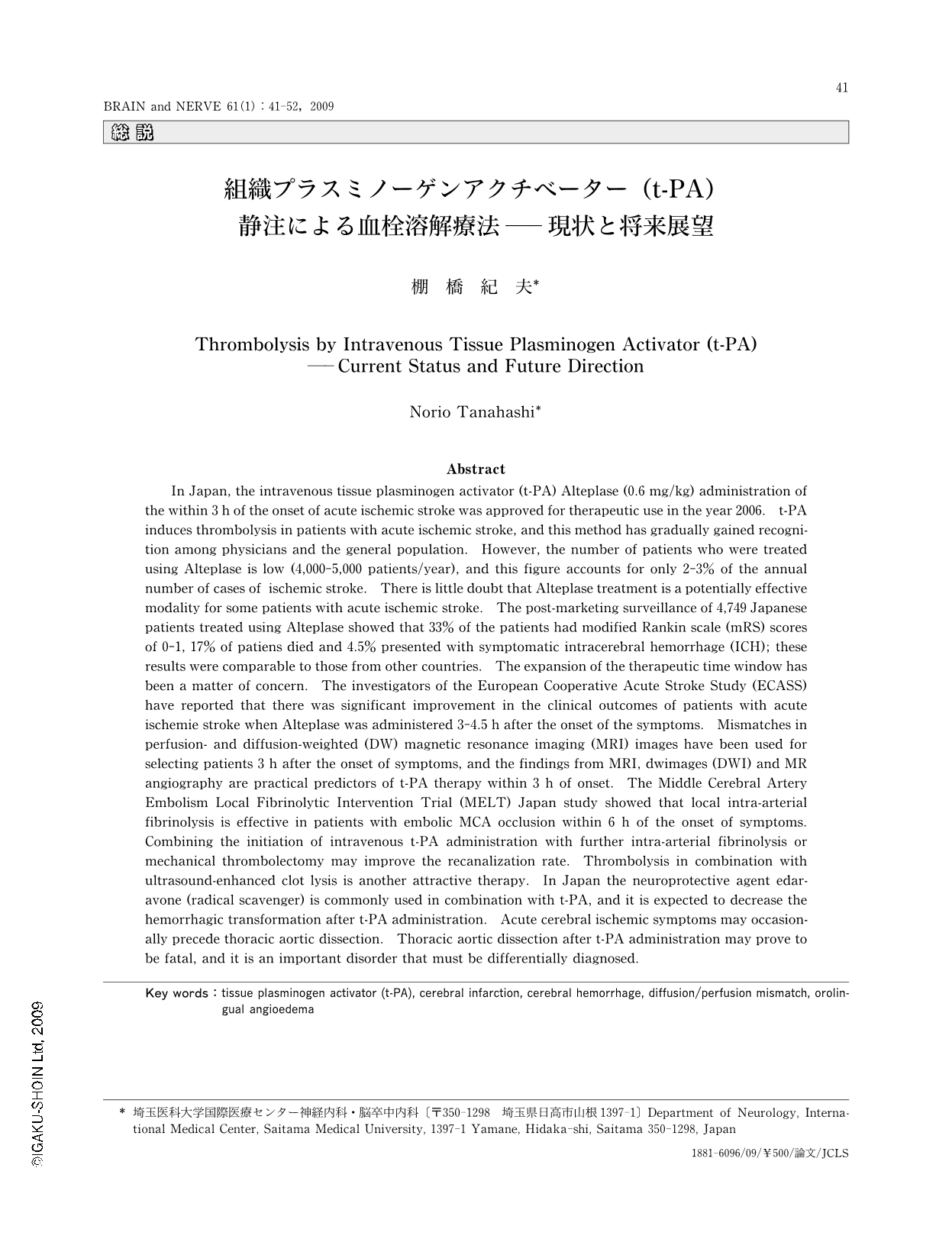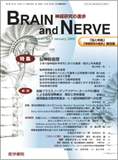Japanese
English
- 有料閲覧
- Abstract 文献概要
- 1ページ目 Look Inside
- 参考文献 Reference
はじめに
脳卒中による死亡者は,わが国では年間約13万人で死因の第3位であるが,脳卒中罹患患者は272万人と推定されている1)。脳卒中は高齢者に多い疾患であり,高齢者の寝たきり原因の最大の原因である。脳卒中のうち,脳梗塞はその3/4を占め最も多い。脳梗塞の急性期治療は,血栓溶解療法,脳浮腫治療薬,抗凝固療法,抗血小板療法,脳保護薬などがあり,これらの治療法が,発症後経過時間,重症度,臨床病型などを参考に選択される2)。複数の治療法が併用される場合が多い。これらの治療法のうち最も効果が期待されるのが組織プラスミノーゲンアクチベーター(t-PA)静注による血栓溶解療法であるが,出血性合併症のリスクもあるため厳格に症例を選択することが求められている3,4)。本稿では,t-PA静注療法の現状と問題点,将来展望について解説する。
Abstract
In Japan,the intravenous tissue plasminogen activator (t-PA) Alteplase (0.6 mg/kg) administration of the within 3 h of the onset of acute ischemic stroke was approved for therapeutic use in the year 2006. t-PA induces thrombolysis in patients with acute ischemic stroke,and this method has gradually gained recognition among physicians and the general population. However,the number of patients who were treated using Alteplase is low (4,000-5,000 patients/year),and this figure accounts for only 2-3% of the annual number of cases of ischemic stroke. There is little doubt that Alteplase treatment is a potentially effective modality for some patients with acute ischemic stroke. The post-marketing surveillance of 4,749 Japanese patients treated using Alteplase showed that 33% of the patients had modified Rankin scale (mRS) scores of 0-1,17% of patiens died and 4.5% presented with symptomatic intracerebral hemorrhage (ICH); these results were comparable to those from other countries. The expansion of the therapeutic time window has been a matter of concern. The investigators of the European Cooperative Acute Stroke Study (ECASS) have reported that there was significant improvement in the clinical outcomes of patients with acute ischemie stroke when Alteplase was administered 3-4.5 h after the onset of the symptoms. Mismatches in perfusion- and diffusion-weighted (DW) magnetic resonance imaging (MRI) images have been used for selecting patients 3 h after the onset of symptoms,and the findings from MRI,dwimages (DWI) and MR angiography are practical predictors of t-PA therapy within 3 h of onset. The Middle Cerebral Artery Embolism Local Fibrinolytic Intervention Trial (MELT) Japan study showed that local intra-arterial fibrinolysis is effective in patients with embolic MCA occlusion within 6 h of the onset of symptoms. Combining the initiation of intravenous t-PA administration with further intra-arterial fibrinolysis or mechanical thrombolectomy may improve the recanalization rate. Thrombolysis in combination with ultrasound-enhanced clot lysis is another attractive therapy. In Japan the neuroprotective agent edaravone (radical scavenger) is commonly used in combination with t-PA,and it is expected to decrease the hemorrhagic transformation after t-PA administration. Acute cerebral ischemic symptoms may occasionally precede thoracic aortic dissection. Thoracic aortic dissection after t-PA administration may prove to be fatal,and it is an important disorder that must be differentially diagnosed.

Copyright © 2009, Igaku-Shoin Ltd. All rights reserved.


